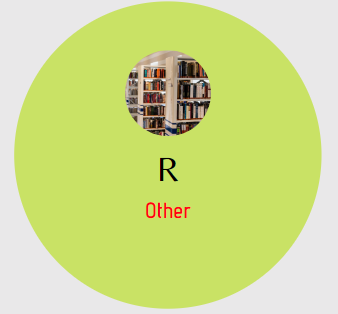[Source: Proceedings of the National Academy of Sciences of the United States of America, full page: (LINK). Abstract, edited.]
Nipah virus dynamics in bats and implications for spillover to humans
Jonathan H. Epstein, Simon J. Anthony, Ariful Islam, A. Marm Kilpatrick, Shahneaz Ali Khan, Maria D. Balkey, Noam Ross, Ina Smith, Carlos Zambrana-Torrelio, Yun Tao, Ausraful Islam, Phenix Lan Quan, Kevin J. Olival, M. Salah Uddin Khan, Emily S. Gurley, M. Jahangir Hossein, Hume E. Field, Mark D. Fielder, Thomas Briese, Mahmudur Rahman, Christopher C. Broder, Gary Crameri, Lin-Fa Wang, Stephen P. Luby, W. Ian Lipkin, and Peter Daszak
PNAS first published November 2, 2020; DOI: https://doi.org/10.1073/pnas.2000429117
Edited by Anthony S. Fauci, National Institute of Allergy and Infectious Diseases, Bethesda, MD, and approved September 14, 2020 (received for review January 8, 2020)
Significance
Nipah virus (NiV) is a zoonotic virus and World Health Organization (WHO) priority pathogen that causes near-annual outbreaks in Bangladesh and India with >75% mortality. This work advances our understanding of transmission of NiV in its natural bat reservoir by analyzing data from a 6-y multidisciplinary study of serology, viral phylogenetics, bat ecology, and immunology. We show that outbreaks in Pteropus bats are driven by increased population density, loss of immunity over time, and viral recrudescence, resulting in multiyear interepizootic periods. Incidence is low, but bats carry NiV across Bangladesh and can shed virus at any time of year, highlighting the importance of routes of transmission to the timing and location of human NiV outbreaks.
Abstract
Nipah virus (NiV) is an emerging bat-borne zoonotic virus that causes near-annual outbreaks of fatal encephalitis in South Asia—one of the most populous regions on Earth. In Bangladesh, infection occurs when people drink date-palm sap contaminated with bat excreta. Outbreaks are sporadic, and the influence of viral dynamics in bats on their temporal and spatial distribution is poorly understood. We analyzed data on host ecology, molecular epidemiology, serological dynamics, and viral genetics to characterize spatiotemporal patterns of NiV dynamics in its wildlife reservoir, Pteropus medius bats, in Bangladesh. We found that NiV transmission occurred throughout the country and throughout the year. Model results indicated that local transmission dynamics were modulated by density-dependent transmission, acquired immunity that is lost over time, and recrudescence. Increased transmission followed multiyear periods of declining seroprevalence due to bat-population turnover and individual loss of humoral immunity. Individual bats had smaller host ranges than other Pteropus species (spp.), although movement data and the discovery of a Malaysia-clade NiV strain in eastern Bangladesh suggest connectivity with bats east of Bangladesh. These data suggest that discrete multiannual local epizootics in bat populations contribute to the sporadic nature of NiV outbreaks in South Asia. At the same time, the broad spatial and temporal extent of NiV transmission, including the recent outbreak in Kerala, India, highlights the continued risk of spillover to humans wherever they may interact with pteropid bats and the importance of limiting opportunities for spillover throughout Pteropus’s range.
bats – henipavirus – Nipah virus – Pteropus – disease modeling
Footnotes
1 To whom correspondence may be addressed. Email: epstein@ecohealthalliance.org.
2 Present address: Department of Pathology, Microbiology, and Immunology, UC Davis School of Veterinary Medicine, Davis, CA 95616.
Author contributions: J.H.E., A.M.K., E.S.G., H.E.F., T.B., G.C., S.P.L., W.I.L., and P.D. designed research; J.H.E., S.J.A., Ariful Islam, S.A.K., M.D.B., I.S., Ausraful Islam, P.L.Q., M.S.U.K., G.C., and L.-F.W. performed research; N.R., T.B., C.C.B., G.C., L.-F.W., and W.I.L. contributed new reagents/analytic tools; J.H.E., S.J.A., A.M.K., N.R., I.S., C.Z.-T., Y.T., P.L.Q., K.J.O., H.E.F., T.B., C.C.B., G.C., and L.-F.W. analyzed data; and J.H.E., S.J.A., Ariful Islam, A.M.K., N.R., I.S., C.Z.-T., Y.T., K.J.O., E.S.G., M.J.H., H.E.F., M.D.F., T.B., M.R., C.C.B., G.C., L.-F.W., S.P.L., W.I.L., and P.D. wrote the paper.
The authors declare no competing interest.
This article is a PNAS Direct Submission.
This article contains supporting information online at https://www.pnas.org/lookup/suppl/doi:10.1073/pnas.2000429117/-/DCSupplemental.
Data Availability. All molecular sequences are available via GenBank (GenBank accession nos. MK995284–MK995302). The datasets generated during and/or analyzed during the current study are available from the corresponding author on request.
Copyright © 2020 the Author(s). Published by PNAS. This open access article is distributed under Creative Commons Attribution-NonCommercial-NoDerivatives License 4.0 (CC BY-NC-ND).
–
Keywords: Henipavirus; Nipah Virus; Bats; Wildlife; Bangladesh.
——





You must be logged in to post a comment.